ROYAL ENFIELD
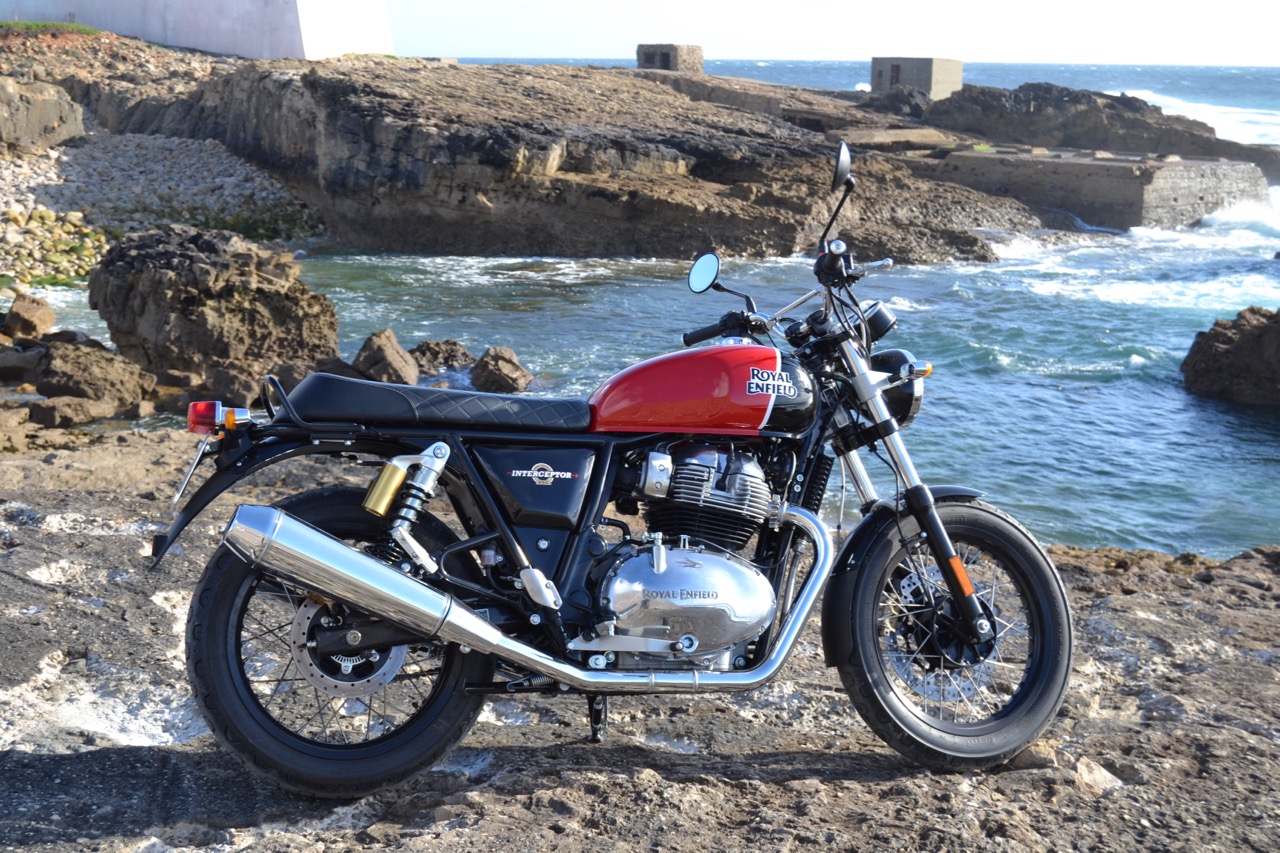 Interceptor 650: A neoclassical style
Interceptor 650: A neoclassical style
After attending the EICMA Salon of 2017 at the EICMA Salon in 2017 at the presentation of the two versions that also equip the new twin-engine engines of Royal Enfield, Continental and Interceptor, we waited to know more about these two units and to better understand the strategy outlined by the brand to attack new markets, namely the European market and the United States.
The Royal Enfield Interceptor 650 has been named Motorcycle of the Year 2019 by IMOTY, which in India represents the highest premium in the two-wheeler industry and is attributed considering a number of variables such as technical innovations, benefits, comfort, safety and relationship price / quality, among others.
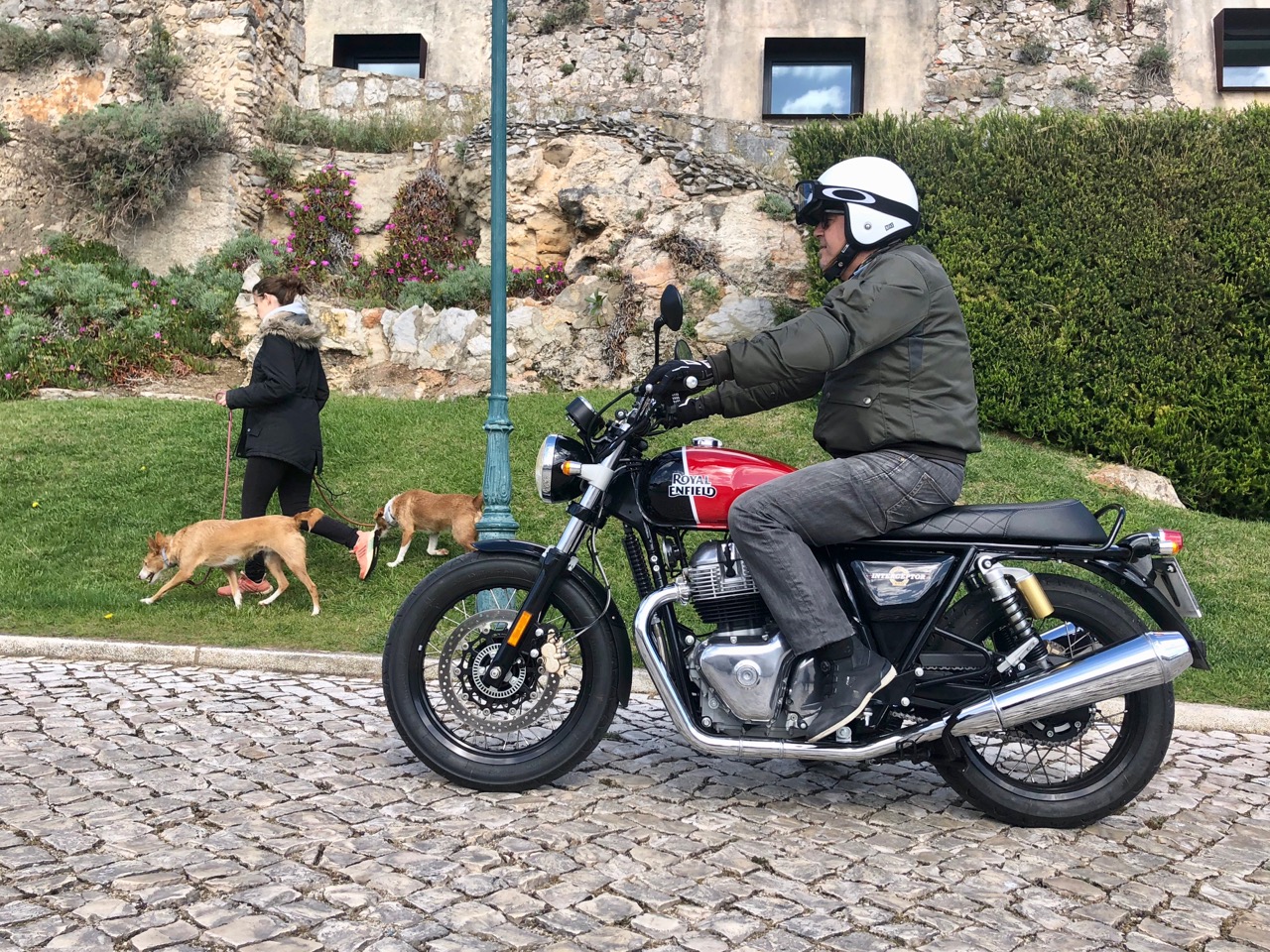 It was with great curiosity that at the invitation of Royal Enfield Portugal we were able to schedule a test of a unit of the Interceptor 650, a reality for which we left without any expectations, knowing that Royal Enfield as an Indian brand had in the development of the new models 650 the concern to directly involve its R & D center in England and also hire the company Harris Performance, acquired in the meantime by Royal Enfield, to develop the frames of the new 6fifty.
It was with great curiosity that at the invitation of Royal Enfield Portugal we were able to schedule a test of a unit of the Interceptor 650, a reality for which we left without any expectations, knowing that Royal Enfield as an Indian brand had in the development of the new models 650 the concern to directly involve its R & D center in England and also hire the company Harris Performance, acquired in the meantime by Royal Enfield, to develop the frames of the new 6fifty.Historically the term "Interceptor" once was used by brand, specifically in the 60s, a model that also was riding in her early one engine 692cc and subsequently suffered displacement increase to 736cc, reality which remained until 1970, when the British company closed the doors.
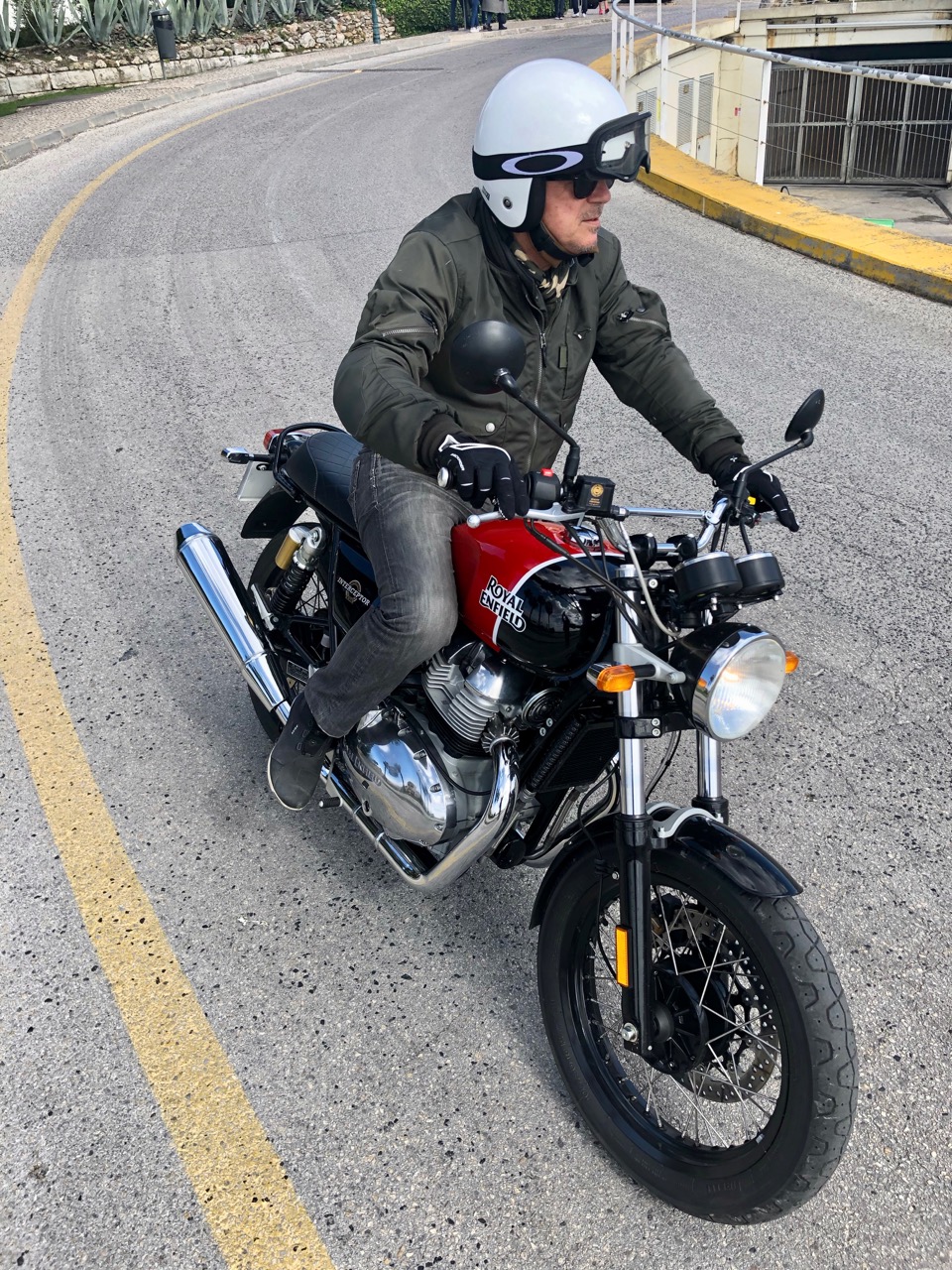 The Royal Enfield in India but survived and remained as top bikes in the Indian market over the years. We saw in the last decade the single cylinder 350cc engine capacity to evolve from traditional to 500cc and now with the new flat-twin engines of 650cc Royal Enfield to allow the brand to define a global strategy in terms of market.
The Royal Enfield in India but survived and remained as top bikes in the Indian market over the years. We saw in the last decade the single cylinder 350cc engine capacity to evolve from traditional to 500cc and now with the new flat-twin engines of 650cc Royal Enfield to allow the brand to define a global strategy in terms of market.The Interceptor and GT 650 were developed from rooted, frame, motors and cycling, drawn from a blank sheet and of course, within the traditional positioning of the brand in terms of the segment where they fit that is the neo-classic style.
For the production of these new units, Royal Enfield has created a line of its own where quality control started to have extremely high standards in order to guarantee an extreme quality of the final product, taking into account the European and North American markets.
 At the first contact with the Interceptor we immediately liked its aesthetic, classic but simultaneously with a touch of irreverence given by the high exhaust tips in a sporty style, and also the decoration of the same, with the tank in two tones that reinforced the side rebel of the same. When we sit down at the Interceptor, we immediately have a pleasant feeling that everything is in the right place. The arms extend naturally and the hands grip the wrists effortlessly and in the anatomically correct position, neither too high nor too low, also bearing in mind that this version assembles a trail-type handlebar (could be a scrambler).
At the first contact with the Interceptor we immediately liked its aesthetic, classic but simultaneously with a touch of irreverence given by the high exhaust tips in a sporty style, and also the decoration of the same, with the tank in two tones that reinforced the side rebel of the same. When we sit down at the Interceptor, we immediately have a pleasant feeling that everything is in the right place. The arms extend naturally and the hands grip the wrists effortlessly and in the anatomically correct position, neither too high nor too low, also bearing in mind that this version assembles a trail-type handlebar (could be a scrambler).
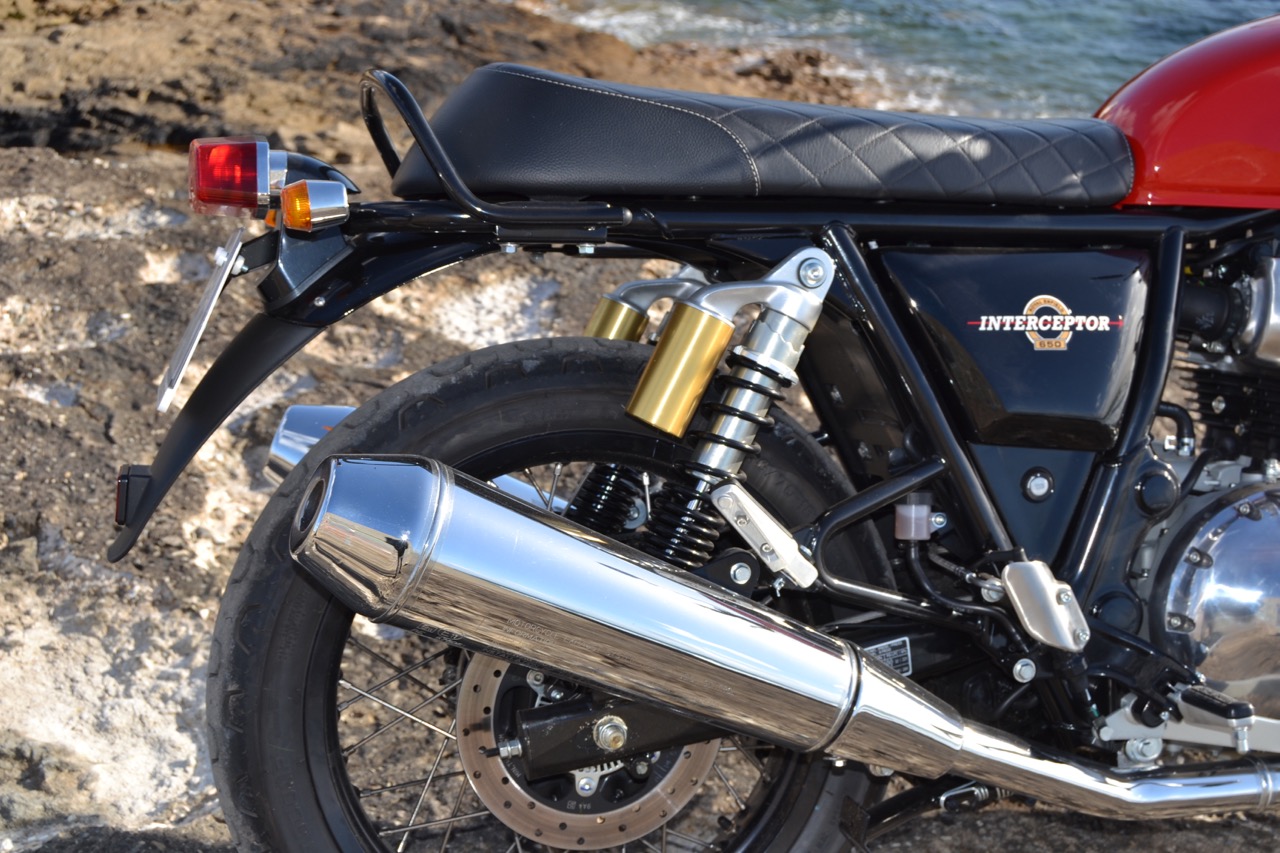 The footrests are also well placed and the knees are precisely resting where they are supposed to be in the tank. (a situation which, for example, in the Triumph does not happen, if I allow the comparison here, since the knees are usually below the tank and almost against the engine heads).
The footrests are also well placed and the knees are precisely resting where they are supposed to be in the tank. (a situation which, for example, in the Triumph does not happen, if I allow the comparison here, since the knees are usually below the tank and almost against the engine heads).The start of the twin-cylinder is noted for the sound of its beautiful exhaust tips, the sports-type Megaphone Norton of the past, of beautiful aesthetic effect as we have already mentioned. The engine is quiet and surprisingly vibration-free which denotes a good job in its development and in achieving its internal balance. Its 47 bhp at 6,820 rpm and a torque of 52 Nm at 5,250 rpm can be misleading in terms of the actual performance of the Interceptor because the engine delivers 80% of its torque from low revs (2,500 rpm) which is a guarantee of always driving lively and exciting.
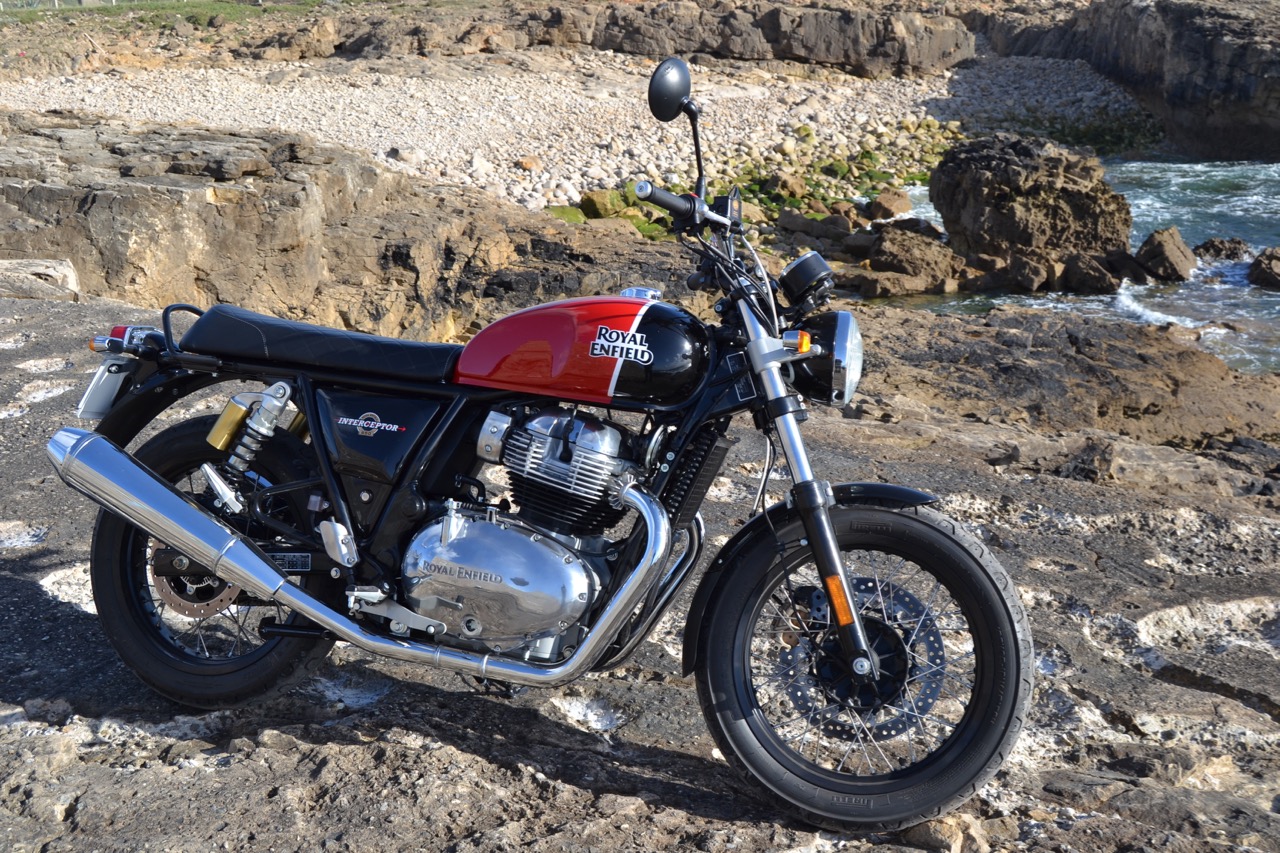 The 6-speed gearbox also surprised us with its precision and excellent staggering, ensuring a balance between power and binaries available and its performance on the road. Equilibrium is even the characteristic that is most evident in the Interceptor, very easy to drive, agile and precise in curve, certainly thanks to the good design of its frame, and with suspensions that denote the concern of Royal Enfield in endowing the Interceptor with a character of use as broadly as possible.
The 6-speed gearbox also surprised us with its precision and excellent staggering, ensuring a balance between power and binaries available and its performance on the road. Equilibrium is even the characteristic that is most evident in the Interceptor, very easy to drive, agile and precise in curve, certainly thanks to the good design of its frame, and with suspensions that denote the concern of Royal Enfield in endowing the Interceptor with a character of use as broadly as possible.
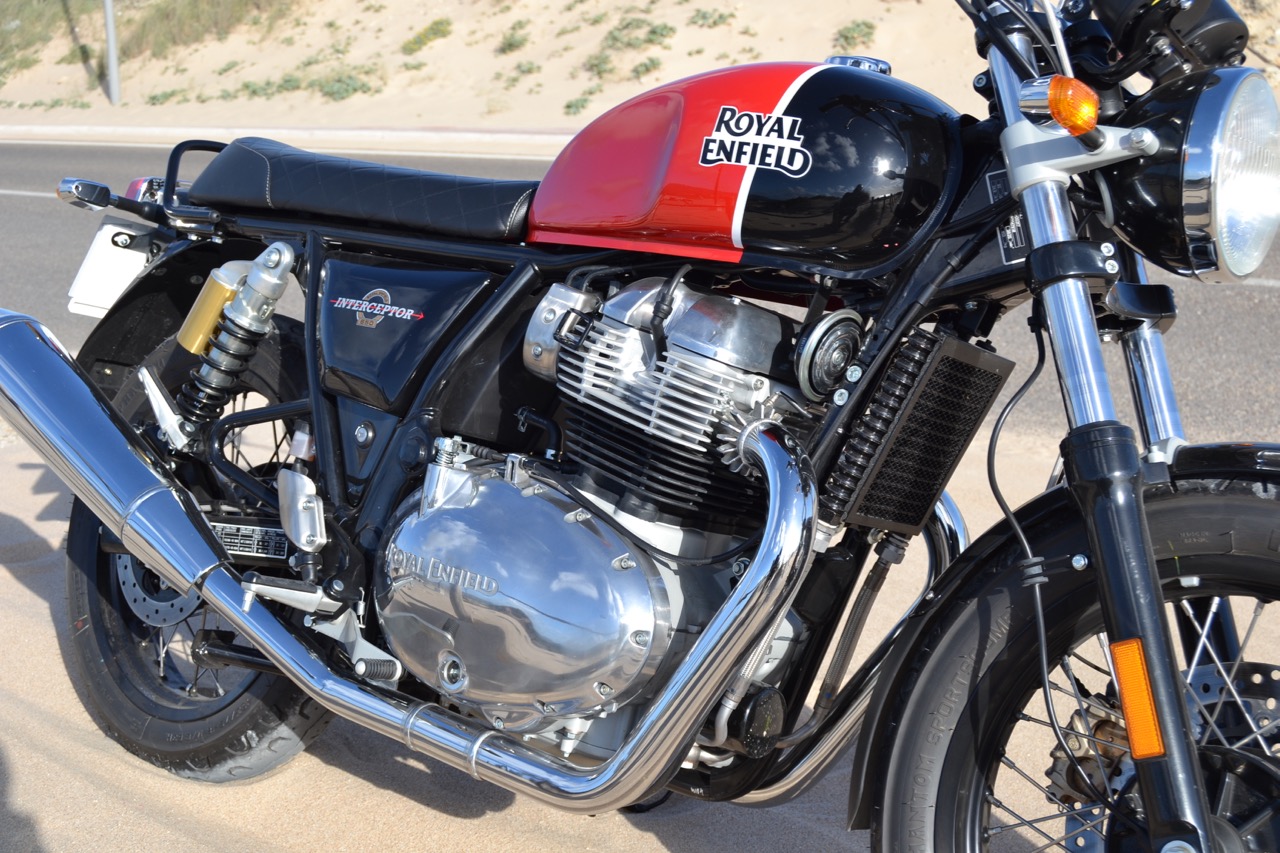
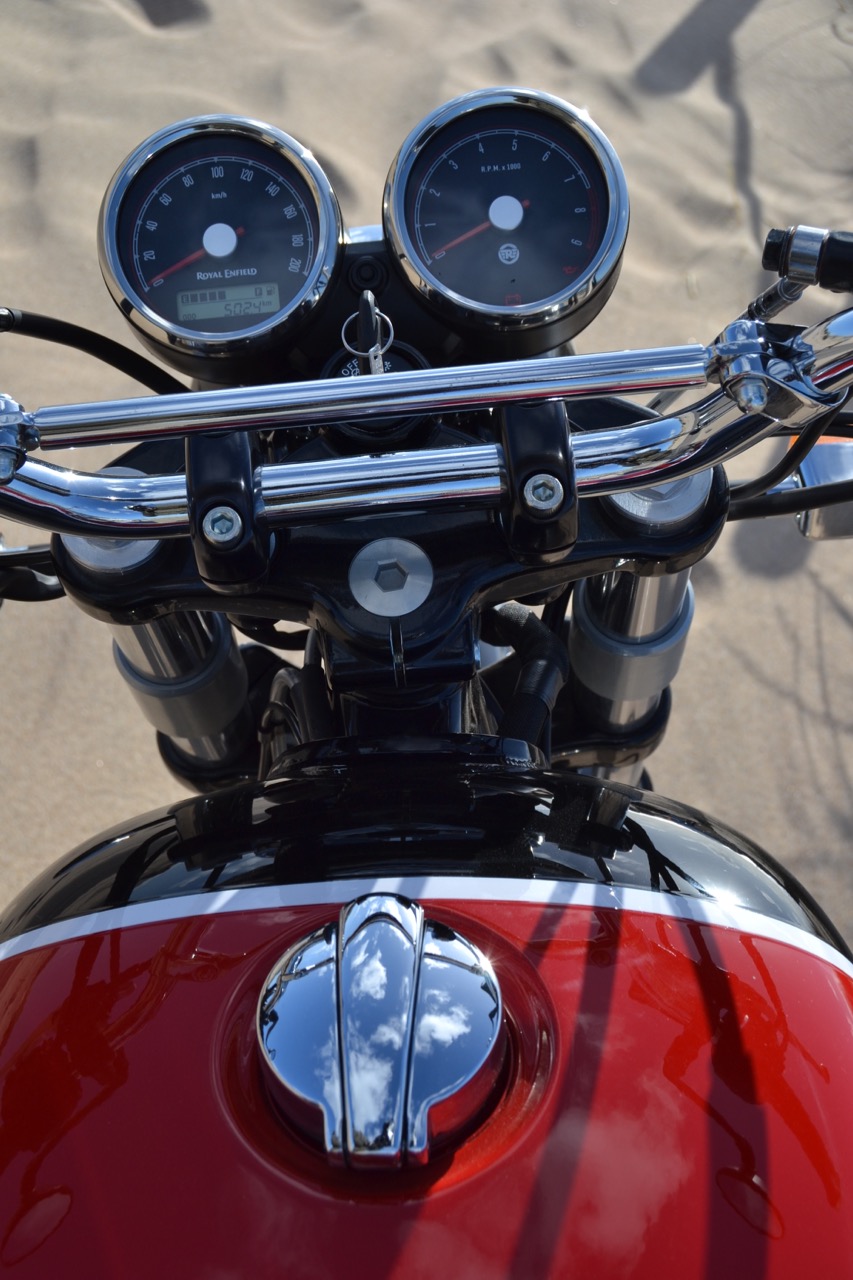 With traditional 41mm front suspensions and a 110mm stroke and rear with double damper and 88mm stroke, the Interceptor is a bike fit for everything, even for a road or other off road (a reality that we dare to test and in surprised by the behavior that it demonstrated in all-terrain, a true "scrambler"). The fact of also mounting wheels of 18 ", front and rear, allows to give the Interceptor this versatility with the suspensions to prove to be very effective even in bad floor.
Pedro Rocha, de Portugal
With traditional 41mm front suspensions and a 110mm stroke and rear with double damper and 88mm stroke, the Interceptor is a bike fit for everything, even for a road or other off road (a reality that we dare to test and in surprised by the behavior that it demonstrated in all-terrain, a true "scrambler"). The fact of also mounting wheels of 18 ", front and rear, allows to give the Interceptor this versatility with the suspensions to prove to be very effective even in bad floor.
Pedro Rocha, de Portugal

Nenhum comentário:
Postar um comentário